“There were dragons to slay in the old days. Nixon was a good dragon.”
—Pat Oliphant
—Pat Oliphant
by Arnie Fenner
“Man at the Crossroads,” “Guernica,” Liberty Leading the People,” “The Problem We All Live With”: politically-themed art used as social commentary is nothing new. Neither are political cartoons: artists have been lambasting, ridiculing, and generally making fun of elected officials (and the public’s foibles, failings, and predilections) since, most likely, the days of the Pharaoh. The British weekly satirical magazine Punch is credited with coining the modern term “cartoon” in the mid-1800s; until that time “cartone” was used to describe a finished preliminary sketch of a mural on a large piece of cardboard. Punch humorously appropriated the term to refer to its political cartoons, and the popularity of the Punch cartoons led to the term’s widespread use.
Since that time cartoonists around the globe have acted as the public conscience and attempted to “comfort the afflicted and afflict the comfortable.” Sometimes mean-spirited, sometimes blindly partisan, sometimes damn funny, but always with a definite point of view intended to make the viewer think, they also just as often piss people off who tend to blame the messenger for the message. Cartoonists have been harassed and insulted and jailed and threatened and (as we saw in the 2015 shooting at the Charlie Hebdo office in France) murdered.
The power of the mind behind the pen. The power of art.
So since this is the Perpetually Silly Season and we’ve been getting hammered nonstop with political yattering for the past year, I thought I’d do a call-out to some thoughtful, biting, and, yes, funny artist commentators (past and present).
Above: Professor of Art History Albert Boime wrote of Thomas Nast [1840-1902], “As a political cartoonist, Thomas Nast wielded more influence than any other artist of the 19th century. He not only enthralled a vast audience with boldness and wit, but swayed it time and again to his personal position on the strength of his visual imagination. Both Lincoln and Grant acknowledged his effectiveness in their behalf, and as a crusading civil reformer he helped destroy the corrupt Tweed Ring that swindled New York City of millions of dollars. Indeed, his impact on American public life was formidable enough to profoundly affect the outcome of every presidential election during the period 1864 to 1884.” When William “Boss” Tweed attempted to escape justice in December 1875 by fleeing the country, officials in Spain were able to identify the fugitive by using one of Nast’s cartoons. Thomas Nast is widely considered to be the “Father of the American Cartoon.”
Above: During World War II Arthur Szyk [1894-1951] skewered the Axis dictators; the painting above is entitled “Satan Leads the Ball.” First Lady Eleanor Roosevelt wrote in 1943, “…I had a few minutes to stop in to see an exhibition of war satires and miniatures by Arthur Szyk at the Seligman Galleries on East 57th Street. This exhibition is sponsored by the Writers’ War Board. I know of no other miniaturist doing quite this kind of work. In its way it fights the war against Hitlerism as truly as any of us who cannot actually be on the fighting fronts today.”
Above: As has been mentioned in a previous post, Jack Davis [1924-2016] transitioned
from EC comics to editorial illustration. He produced many politically-themed covers
and illustrations for Time among others
Above: Grand Master Don Ivan Punchatz’s [1936-2009] portrait of the accident-prone
successor to Richard Nixon, Gerald R. Ford, for the cover of the National Lampoon.
Above: A pair by C.F. Payne. On the left is Nancy Reagan and the head of White House Chief of Staff, Don Regan. Nancy reportedly orchestrated Regan’s “resignation” when he was unable to contain the political damage from the Iran/Contra revelations. On the right, of course, is Saxy Bill Clinton.
Above: Two by the legendary David Levine [1926-2009]. Ronald Reagan (left), of course, and his extremely controversial drawing of Henry Kissinger for The Nation. Publisher & Editor Victor Navasky said, “…only once (in the spring of 1984) did the staff march on my office with a petition (signed by 25 people in an office that I had thought employed only 23), demanding in advance that we not publish something — and that something was a caricature of Henry Kissinger, in David Levine’s words, ‘Screwing the World.’ “
Above: Robert Grossman’s take on Ronald Reagan.
Above: Thomas Fluharty delivers political satire with a painter’s panache. His painting of Hilary
(top right) received a Gold Award in the Editorial Category of Spectrum 12 in 2005 after a very lengthy jury deliberation about what was and wasn’t fantastic art. Since, at the time, the likelihood of a woman President looked to be some years in the future (SF, you know), “was” won.
Above: “Where were you when the Blitt hit the fan?” wryly asked artist Mark Summers
about Barry Blitt’s controversial cover for The New Yorker. As you might imagine the piece
got a whole lot of internet attention in 2008.
Above: Steve Brodner is unquestionably one of the most fearless of today’s political cartoonists. If you can track down a copy of his book Freedom Fries…do. Steve also edited a book Cathy and I worked on a few years ago, Artists Against the War.
Above: Ann Telanaes (whose animation-influenced style I find absolutely wonderful)
was present to sketch the Benghazi hearings for The Washington Post.
Of the last drawing she wrote, “Okay, Clinton really didn’t take a drink from a cocktail glass
but if I were sitting in her place, that’s what I would have wanted to do.”
Above: Over the last few years Jason Heuser has been doing a series of
ridiculously funny Badass President paintings that he offers as prints. Rumor has it that
there are some folks out there that take them seriously…which might explain a lot these days.
Above: There’s nobody like Pat Oliphant. I’ve had the opportunity to meet him several times over the years and, let me just say…you have to be at the top of your game to keep up. Oh…and his bronze sculptures of presidents are just as pointed and memorable as his cartoons.
These are all Americans, of course, and there are naturally many, many other artists, both here and abroad, with a full spectrum of outlooks and sensibilities that have prodded and keep prodding and pricking the public’s consciousness with their observations and cartoons. How many and where are they? Well, for starters you can hit this link to start your research.


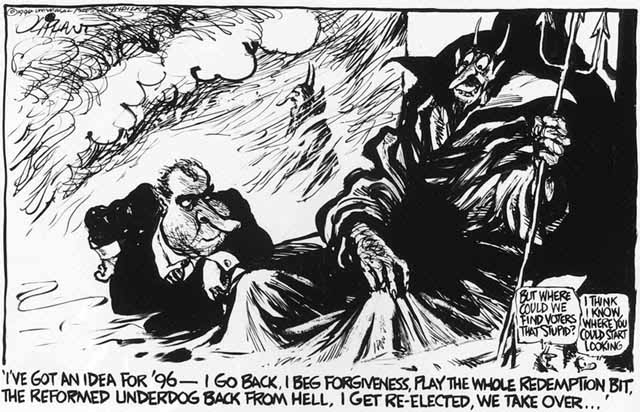
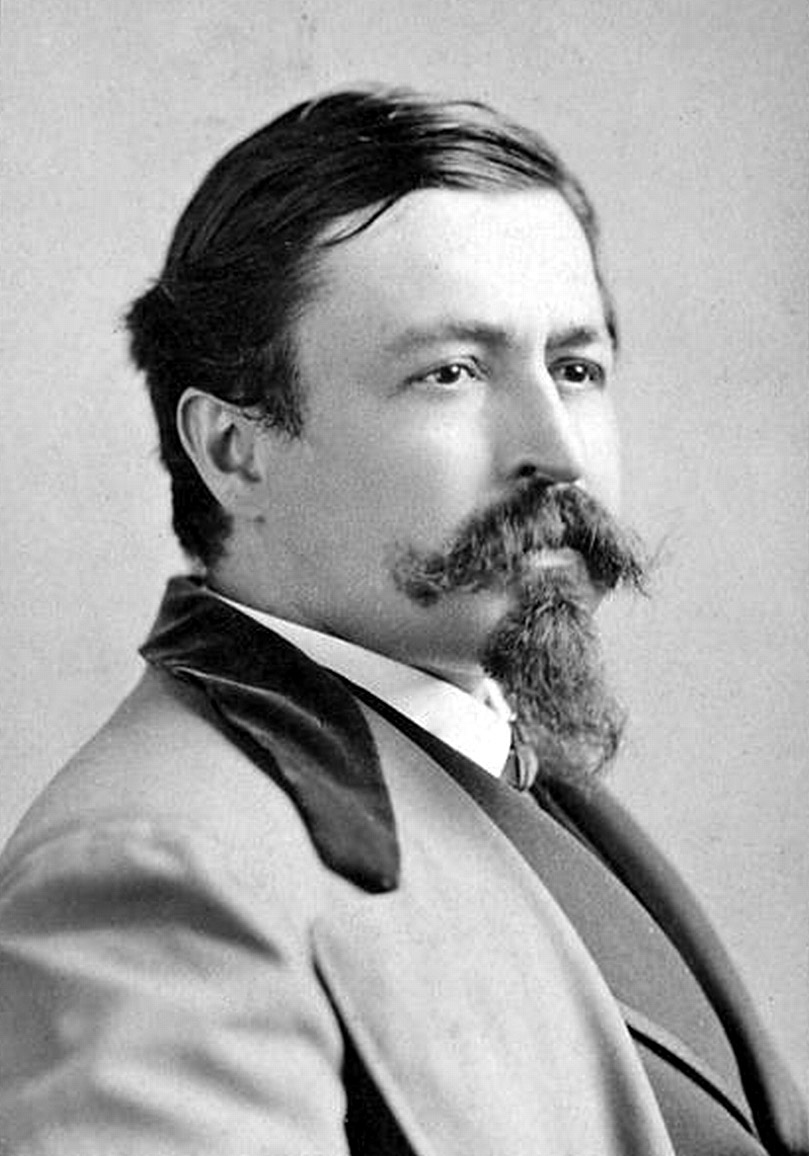
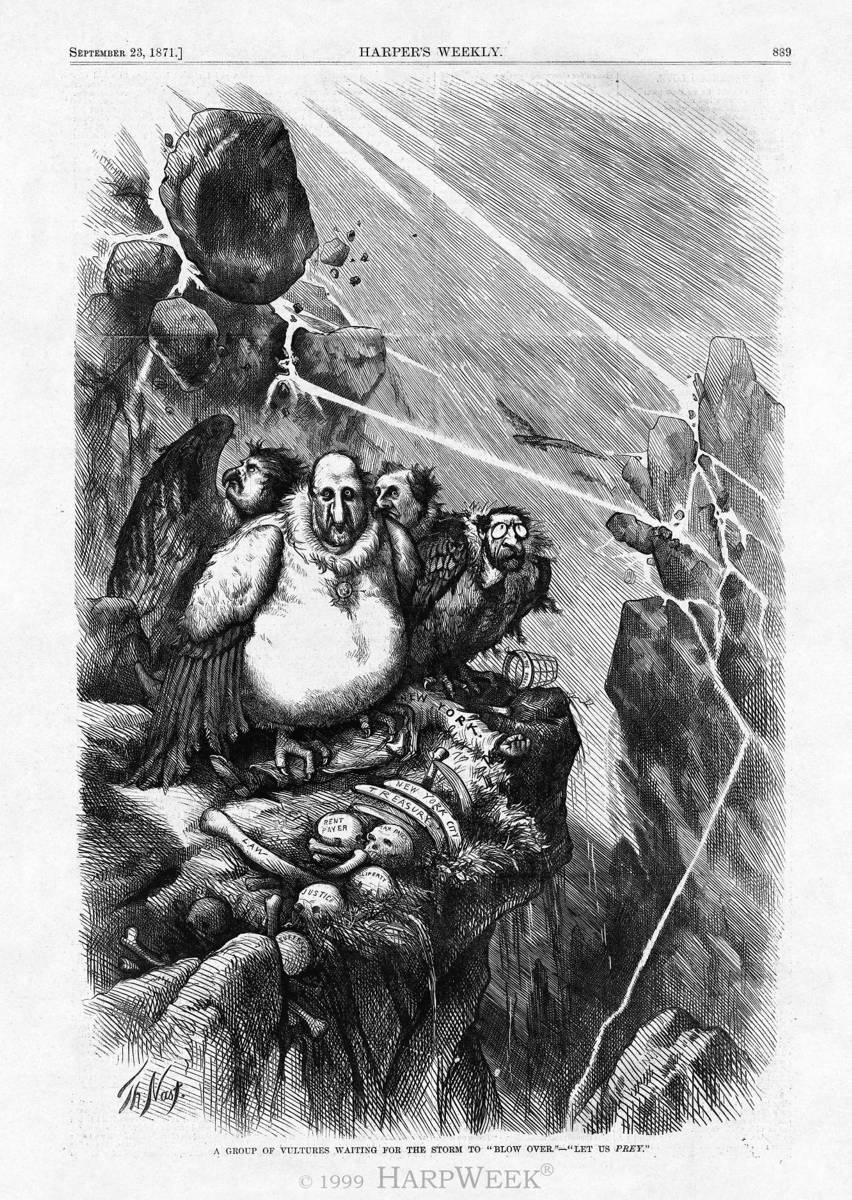
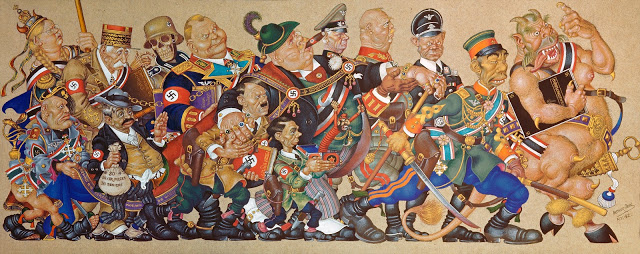
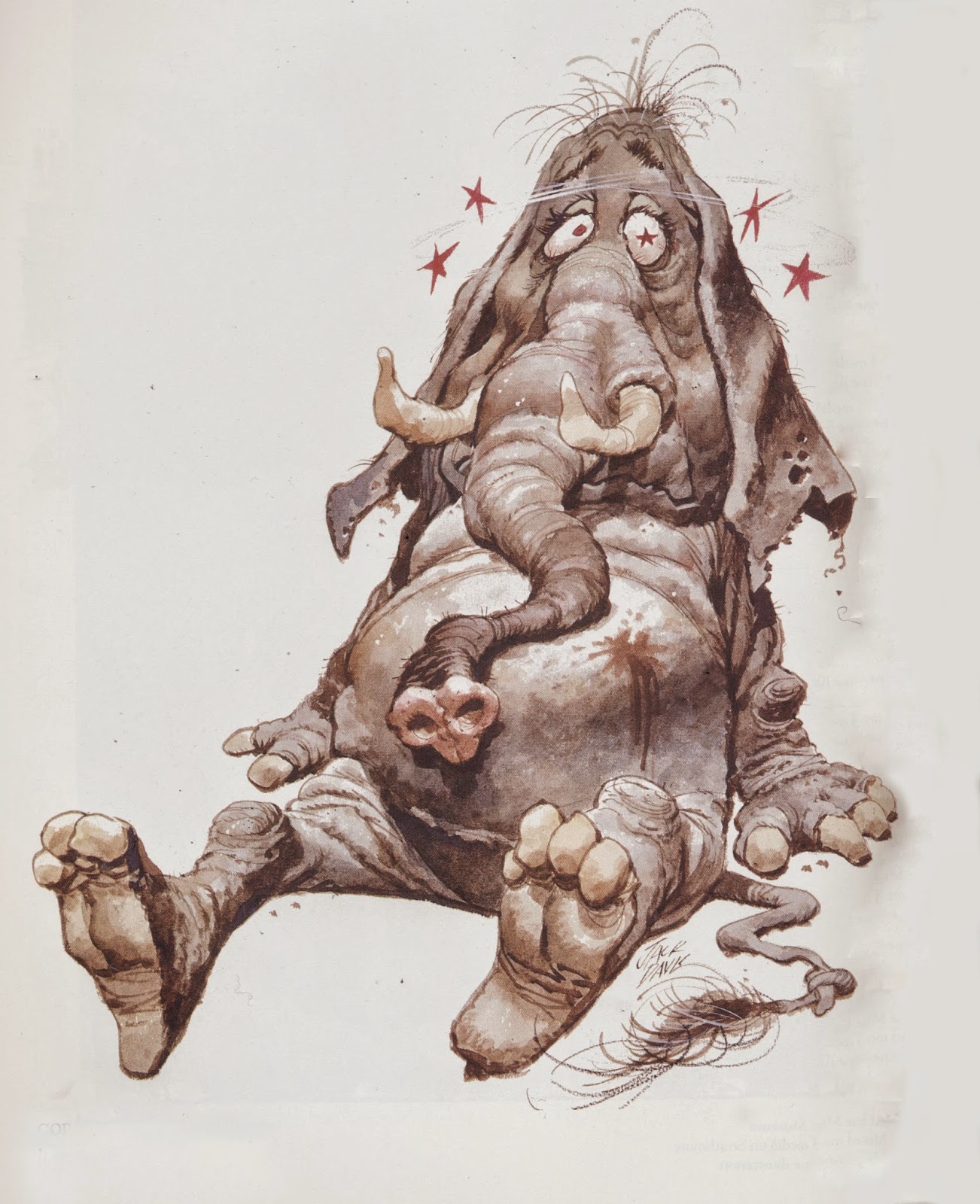
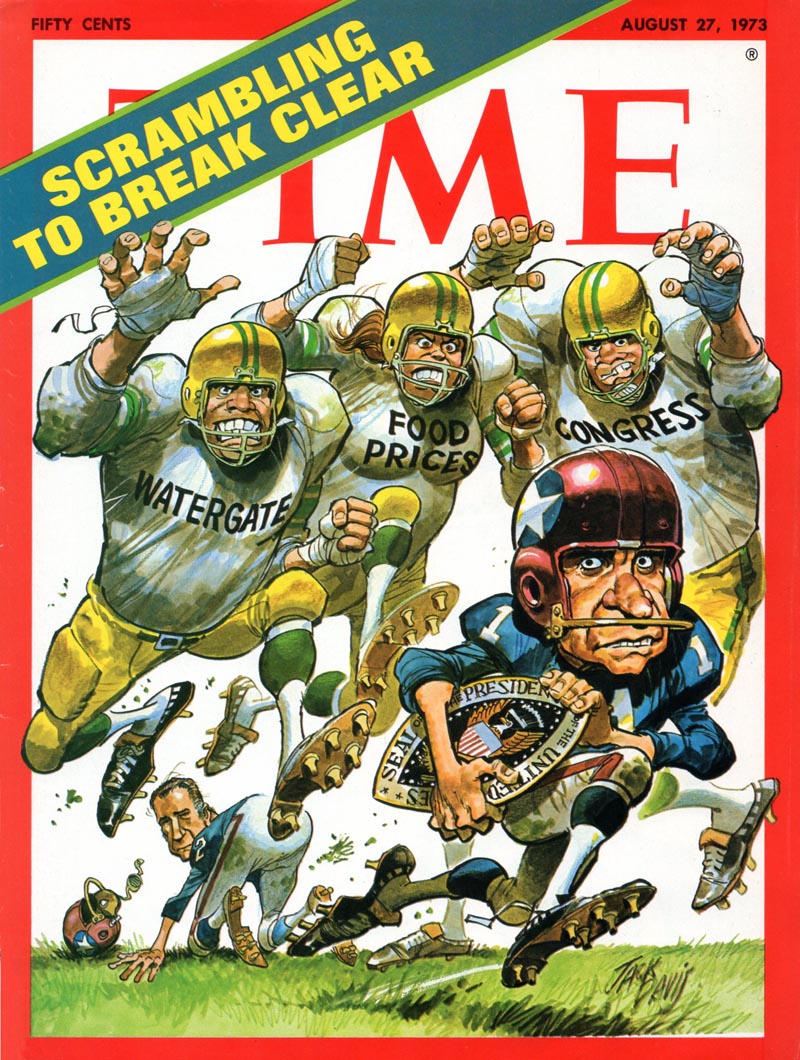
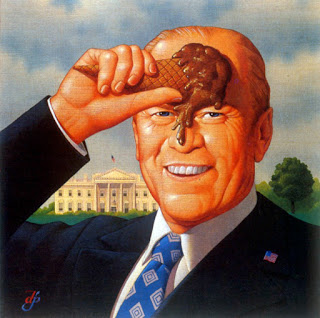
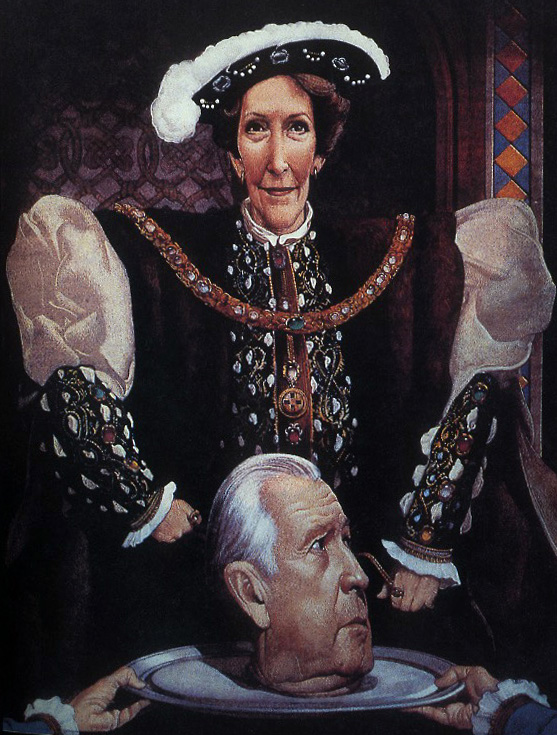
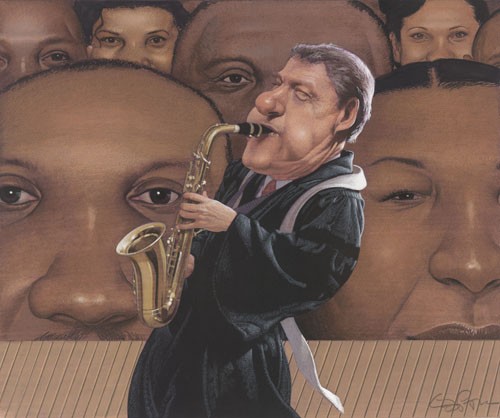
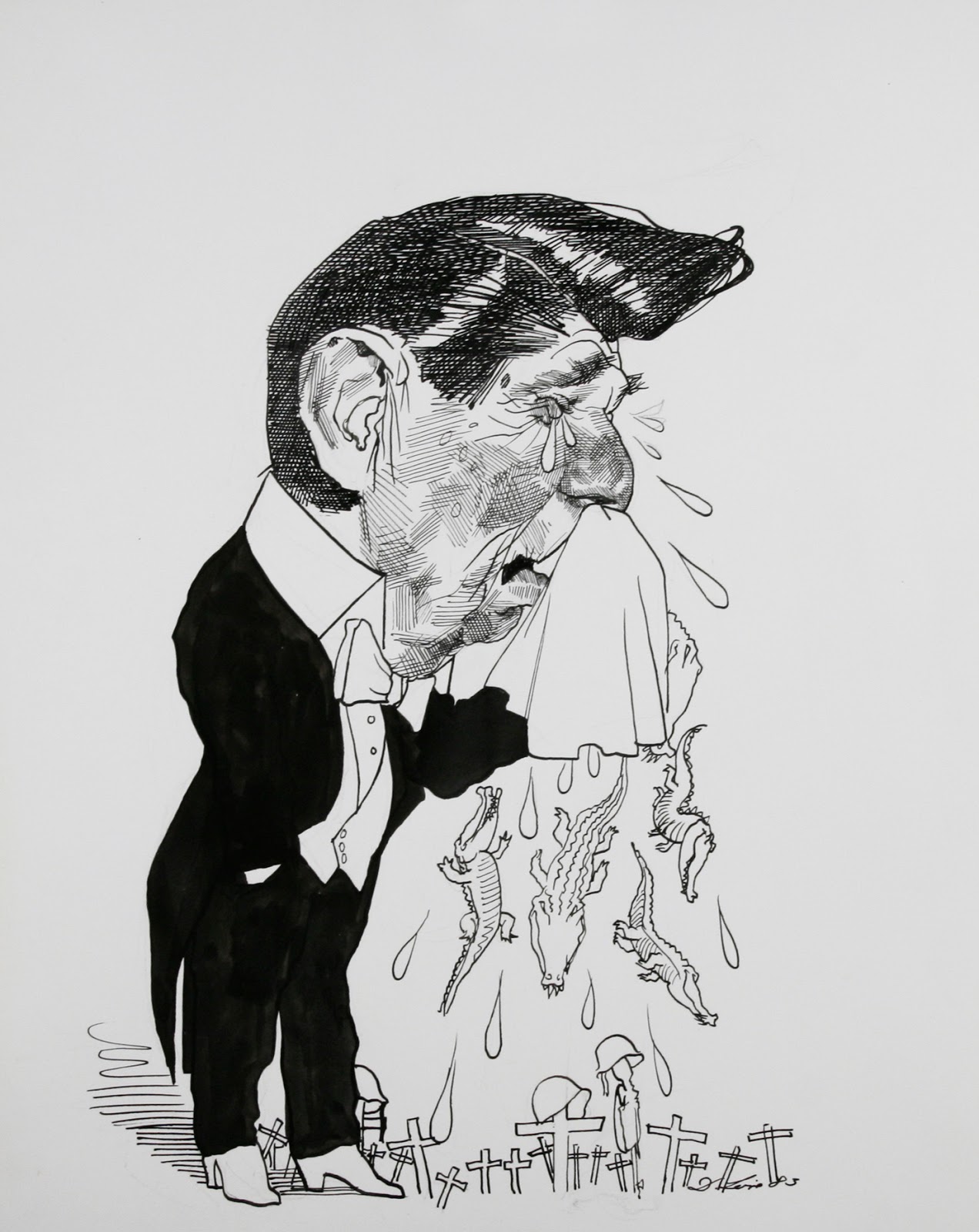
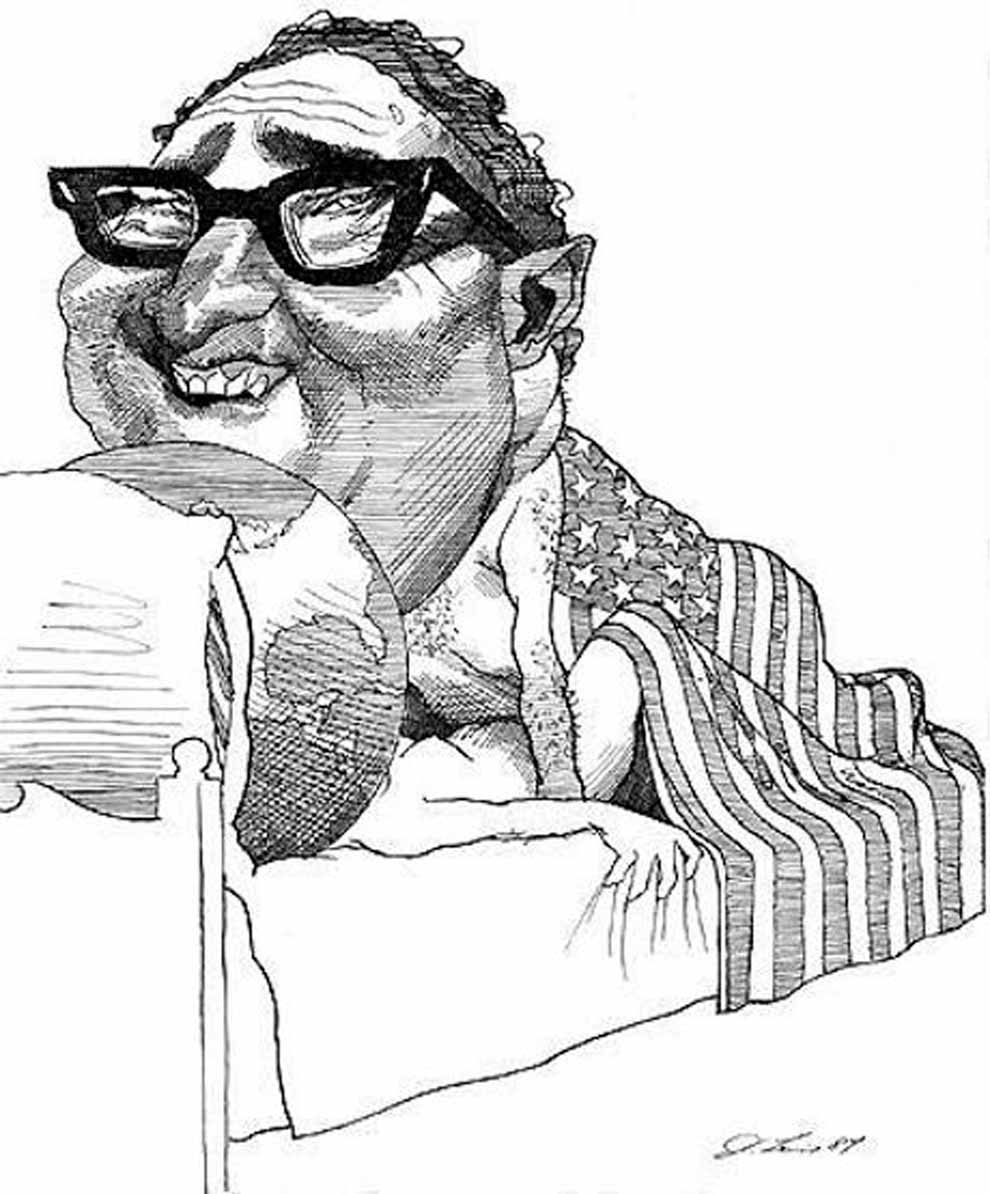
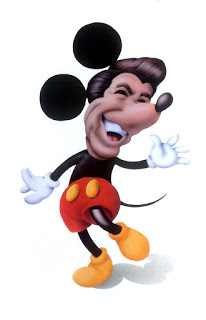
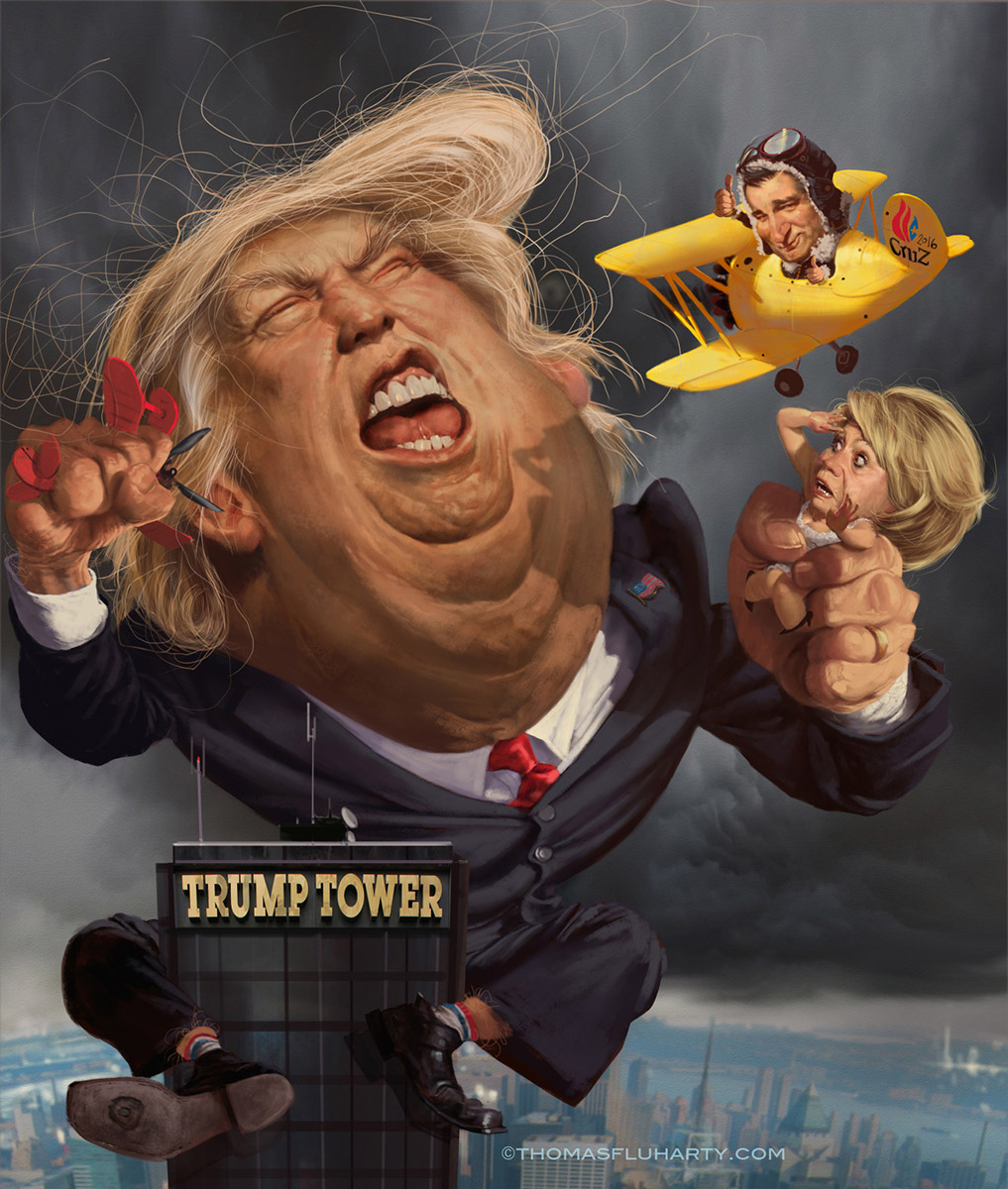
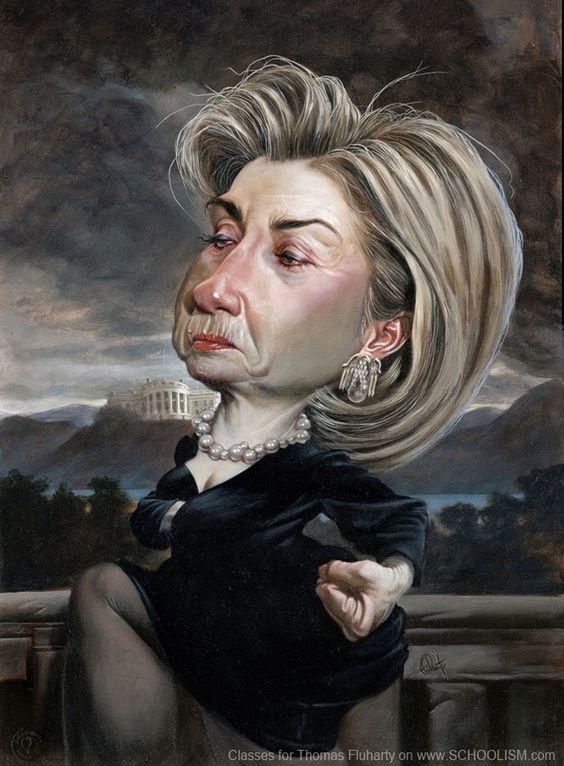
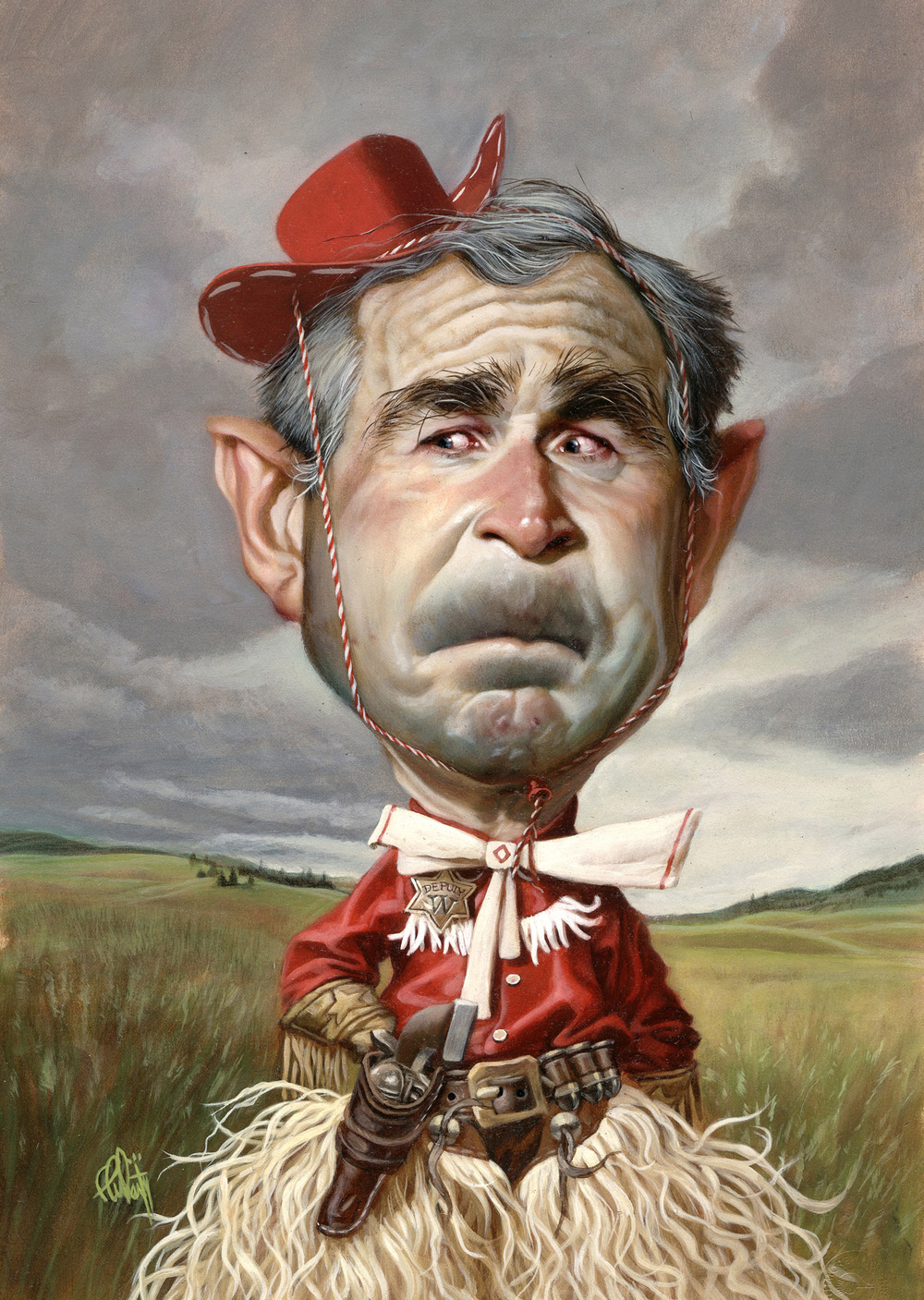
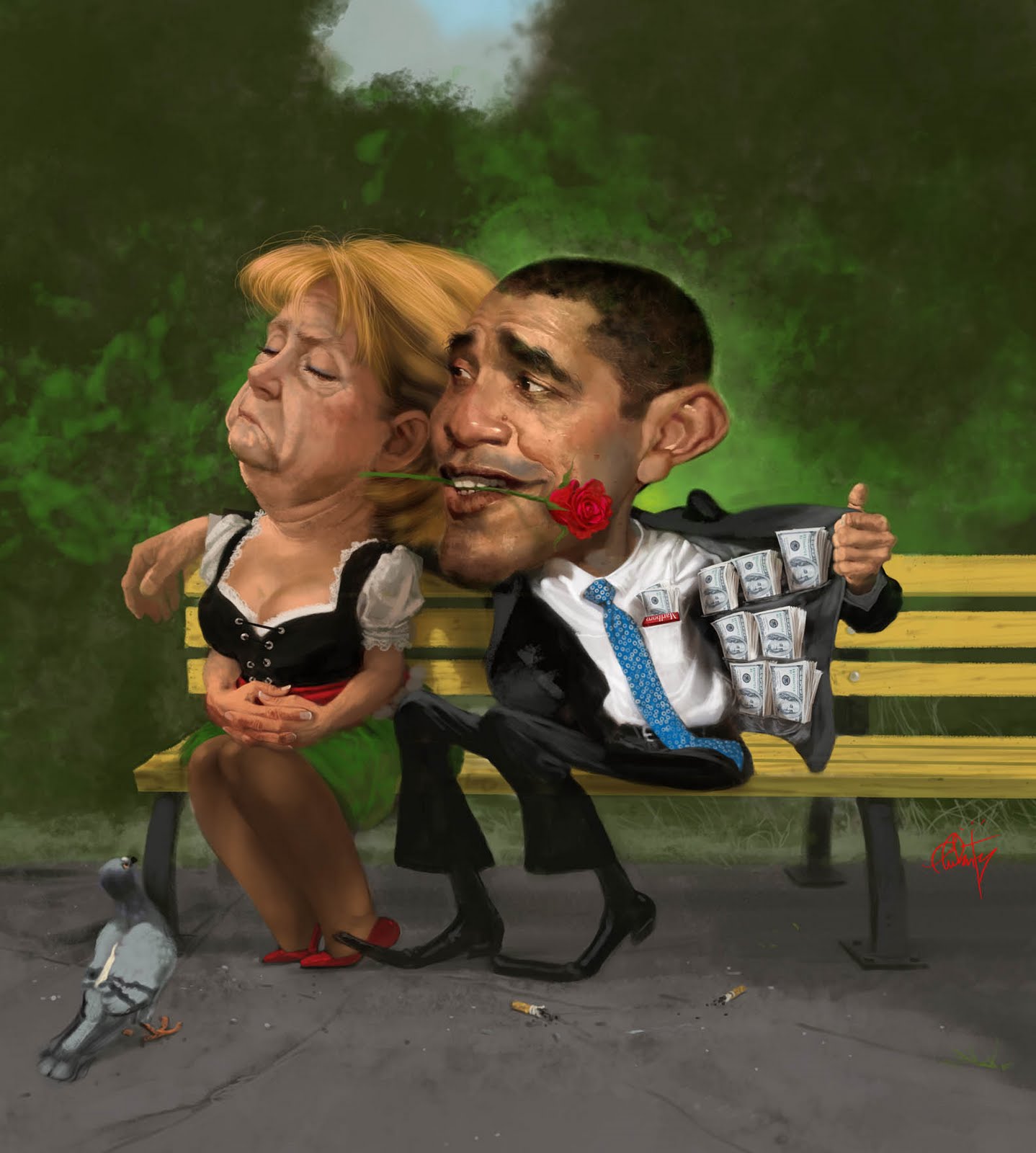
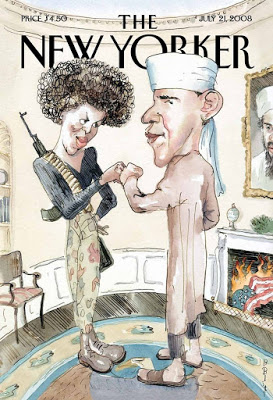
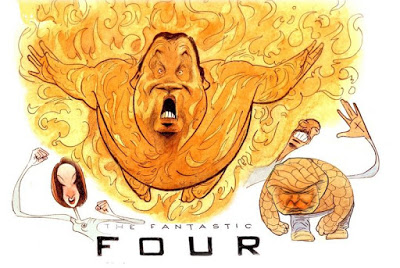
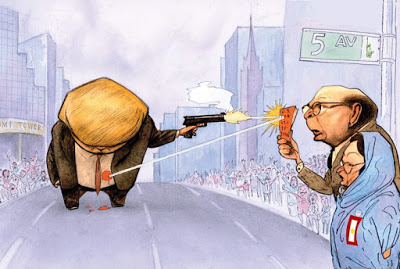
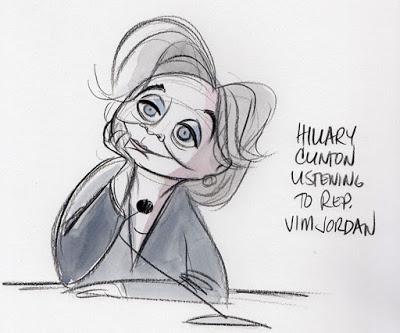

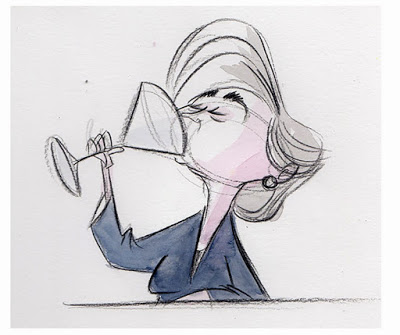
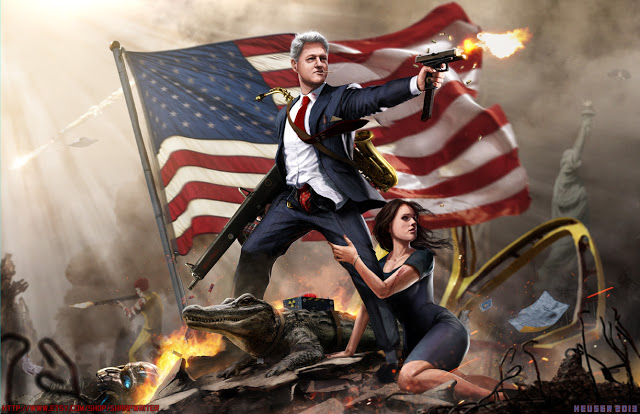


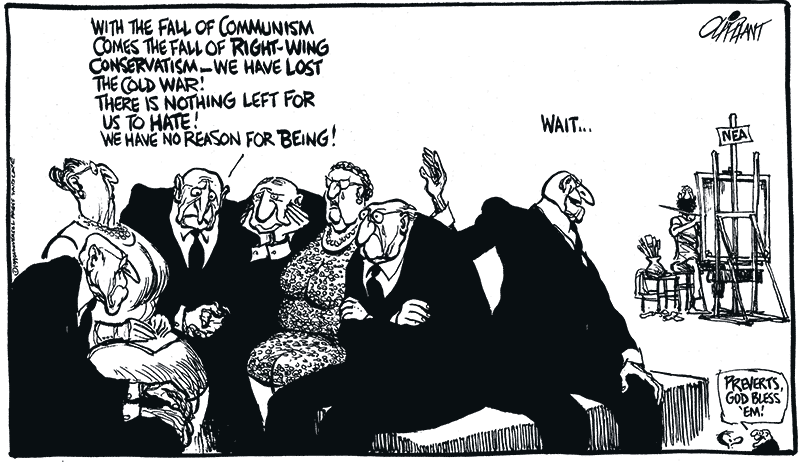
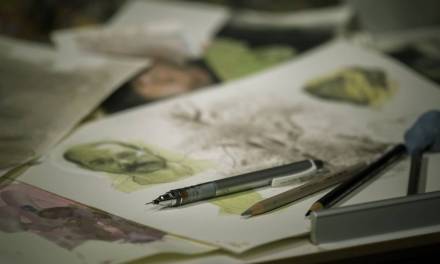
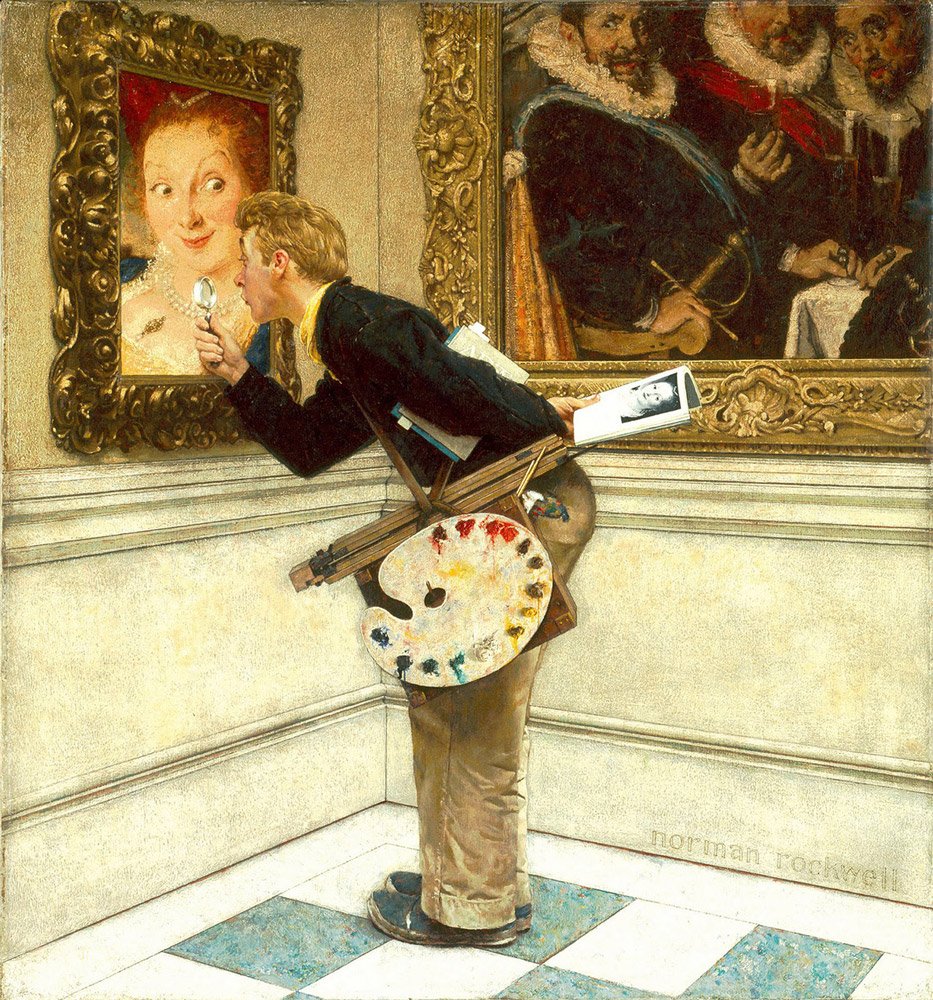
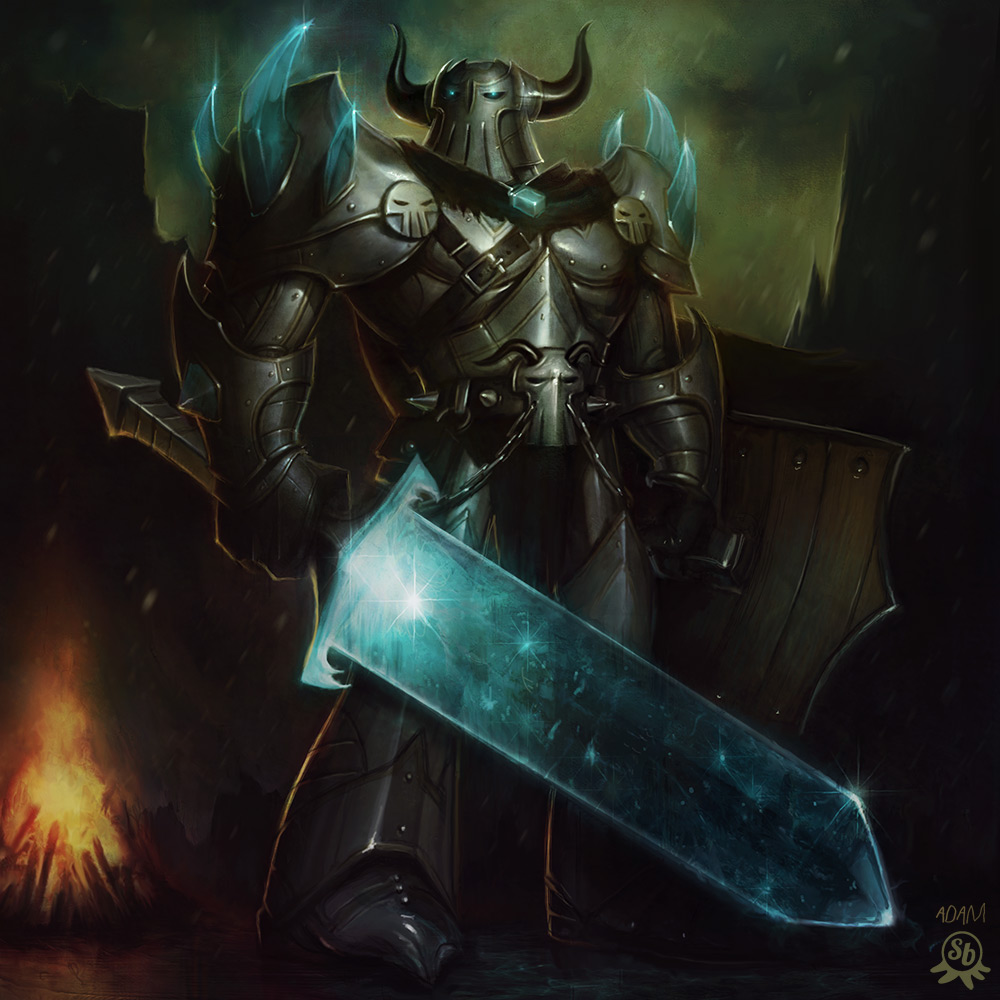
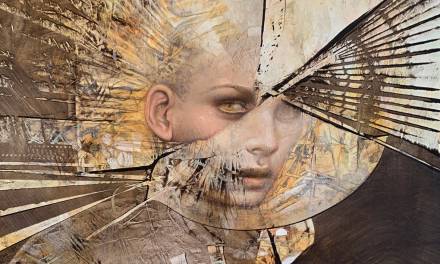

What a great way to jump-start Monday morning. I've recently been rethinking a past dream about becoming a political cartoonist (did it in college for extra spending cash), this may be a sign. Thanks Arnie.
Reading this article made me realize I've been confusing Kerry Waghorn with David Levine..
What about Jeff MacNelly and Michael Ramirez?
Absolutely! Just as Winsor McCay, Dr. Seuss, Bill Mauldin, Erich Sokol, Gary Trudeau, or Herbert Lawrence Block aka Herblock deserve a call-out. There are definitely MANY great political cartoonists/artists. 🙂
Ohh. We've never done a post on Winsor McCay. That is a must!
it always makes me happy to see Pat Oliphant getting some much deserved recognition along with everyone else in this excellent article. Oliphant's influence inspired me to GO to art school. And the rest of these socially conscious and brave illustrators? Too good for words!
Thanks, Chuck! During one ComiCon we visited the San Diego Museum of Art while they were featuring an exhibition of Oliphant's cartoons, fine art, and sculptures and I was blown away. The bronzes were amazing. Years later he was in KC visiting the Universal Press offices; while we were chatting in then-Syndicate-head Lee Salem's office Oliphant was sketching on the big white erase board. What quickly appeared was a funny but rude drawing of Sarah Palin and a…ah…uh…moose. Lee quickly said, “Jeez, Pat, we have to erase that!” Which he did. But not before I got a picture on my phone. 🙂
Good question, Donald.
They are among the best —and willing to take on high-ranking despots that other artists will happily turn a blind eye to.